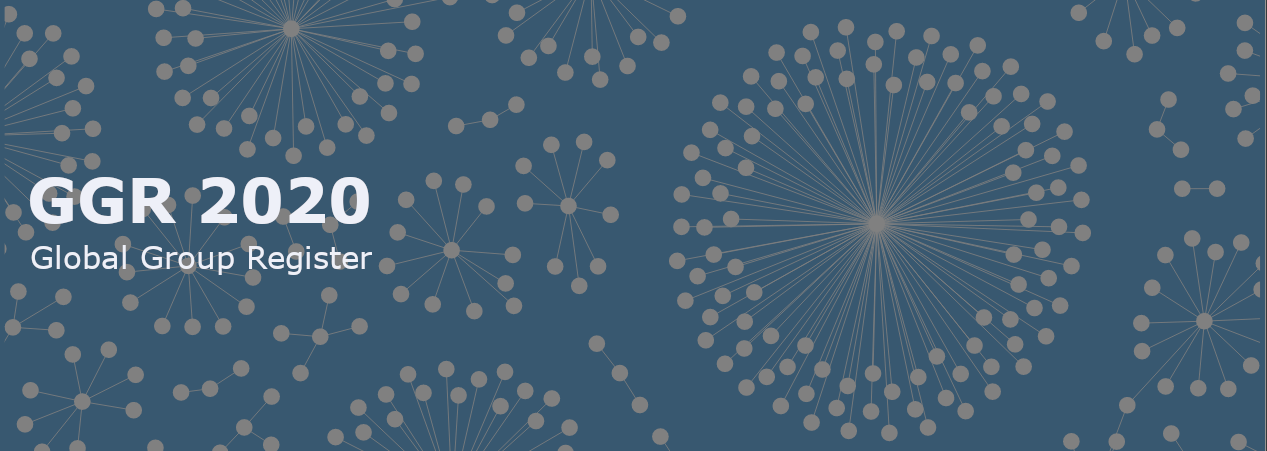Business-stats GGR

Introduction
The United Nations Statistical Commission at its 46th session in 2015 endorsed the creation of a Global Group Register (GGR), a global register of multinational enterprise (MNE) groups to improve the understanding and the measurement of international trade and globalization statistics (E/2015/24, Decision 46/107, Item d(i).). Building on the Eurostat experience in developing the EuroGroup Register (EGR), there was the recognition that the existence of a global enterprise group register (complementing to a certain extent the EGR) that shows the legal structure of the largest MNEs would assist countries to understand the non-national part of the MNEs in their country; facilitate the data sharing among countries using the GGR as a common, public source; and, more generally, aid the analysis of globalization effects and global value chains.
In contrast with the EGR, which is built from the national statistical business registers of EU Member States, the GGR is built from publicly available sources, such as Global Legal Entity Identifier Foundation, companies' annual reports, etc.
The 2020 GGR (released June 2022) contains information for the largest 100+ MNEs based on data sources for the financial year. The current edition builds on experiences and lessons learned from the experimental prototype of the GGR first released in 2021. The concepts and methods for the profiling of the MNEs will continue to be improved under the guidance of the UN Committee of Experts on Business and Trade Statistics and with the inputs of countries. UNSD plans to update the GGR annually based on updated data sources and to expand the scope of profiled MNE groups.
The information in the GGR is based on trusted publicly available sources. The designations employed and the presentation of material in the GGR do not imply the expression of any opinion whatsoever on the part of the Secretariat of the United Nations concerning the legal status of any country, territory, city or area, or of its authorities, or concerning the delimitations of its frontiers or boundaries. Where the designation “country or area” appears on this internet site, it covers countries, territories or areas.
What is the GGR?
The GGR is a publicly available register of the world's largest MNEs containing the legal structure of the MNEs, including their affiliates and subsidiaries, together with their locations, and the detailed types of relationships between the MNE head and its affiliates, when available.
It is built from publicly available data and contains no confidential data input from national statistical offices.
What you will find in the 2020 GGR
The GGR contains the following information:
Names of the MNE heads and their affiliated companies
GGR ID # of each company (unique to the GGR)
Legal Entity Identifier, when available (as assigned by the Global Legal Entity Identifier Foundation)
Country/Area and city of jurisdiction
Industry sector, when known
URL of the corporate website
Name(s) (and GGR IDs) of the parent company(-ies) and their percentage ownership or interest in each affiliate company, when available
Sources used to collect the information
Terminology
The GGR uses the following terminology:
MNE Group Head - the ultimate controlling unit over which no other company has ownership or control.
Ultimate parent - the highest-level legal entity preparing consolidated financial statements, based on the accounting definition of consolidation applying to this parent. Under IFRS accounting standards, accounting consolidation
generally applies when there is control (according to IFRS standard 10). In the GGR, a parent is only identified as an Ultimate Parent if the source for the relationship is the Global Legal Entity Identifier Foundation (GLEIF), the company's Annual Report, its annual financial filing with a financial regulator (e.g., 10-K), on the company's website.
Parent - a company that has some control or influence over another company.
Affiliate - a company over which a parent company owns some percentage greater than zero. This term as used in the GGR includes Subsidiaries, Non-subsidiary Affiliates Unknown and Joint ventures.
The relationship of a company with its parent, can be as:
- • Subsidiary: when the parent controls the child company (i.e., when the parent controls or owns 50% or more of the child company. Generally, control implies that the parent company owns more than 50% of the child entity. However, in many cases, a company's Annual Report or consolidated financial statements identifies subsidiaries in which the parent owns exactly 50% of the child company. In these cases, the parent may have other power or rights that grant it control. Therefore, if the Annual Reports or financial statements identify an entity as a subsidiary, it is included in the GGR as a subsidiary). The GGR indicates the exact percentage ownership when available (generally from the company's annual reports).
- • Non-subsidiary Affiliate: when a parent partially owns (or has a non-controlling interest in) the child company (i.e., generally holding less than 50% ownership or interest). The GGR indicates the exact percentage of ownership and/or interest, when available (generally from the company's annual reports).
- • Unknown: when from available sources there seems to be a relationship with the parent company, but the exact type of relationship is not known.
- • Joint Venture: business arrangement in which companies pool their resources in a commercial enterprise but otherwise retain their distinct identities.
Past releases of the GGR
The experimental prototype of the GGR provides information on the legal structure of the top 100+ MNEs for the 2019 financial year. Please note that when comparing different editions of the GGR, changes may reflect not only changes in the structures of the MNEs, but also changes and improvements to methods and data sources, as described in the User Guide. Therefore, care should be taken when comparing the 2019 and 2020 GGR releases.
Background Document
Contact
Topics
Events and Workshops
- Global Assessment on Statistical Business Registers 2025
- Global Assessment on the Use of Unique Identifiers for Businesses
- Regional course on Statistical Business Registers (Japan, March 2024)
- Regional Workshop on Statistical Business Registers and Industrial Classifications (Jordan, June 2024)


